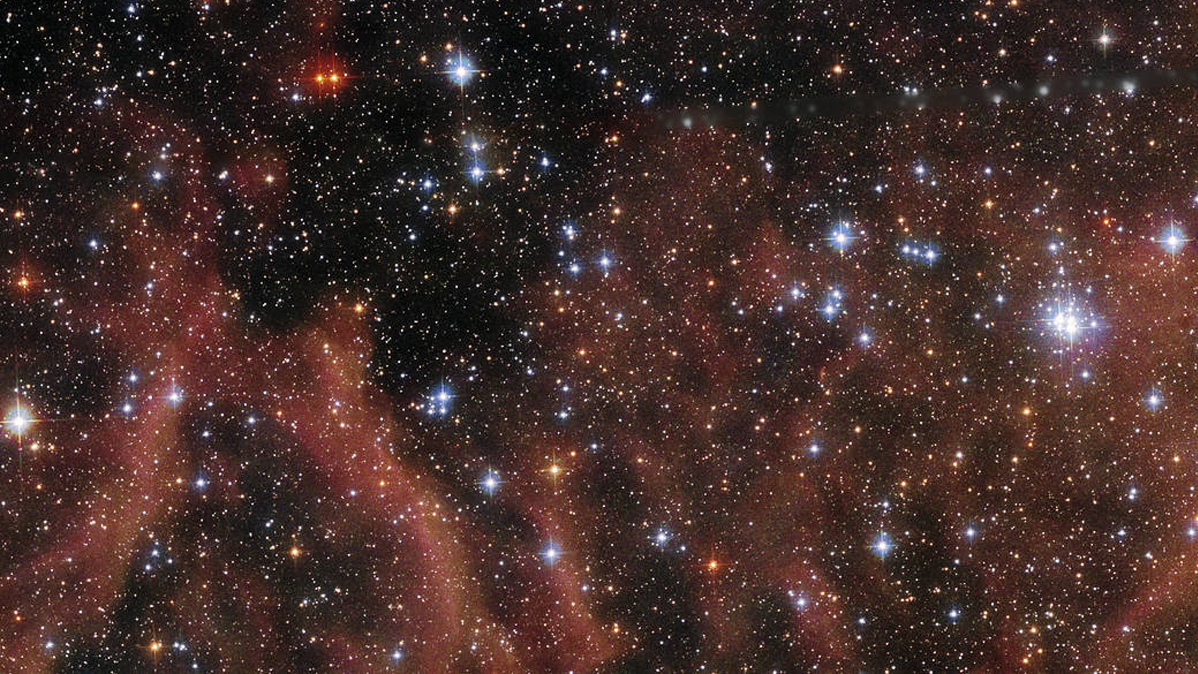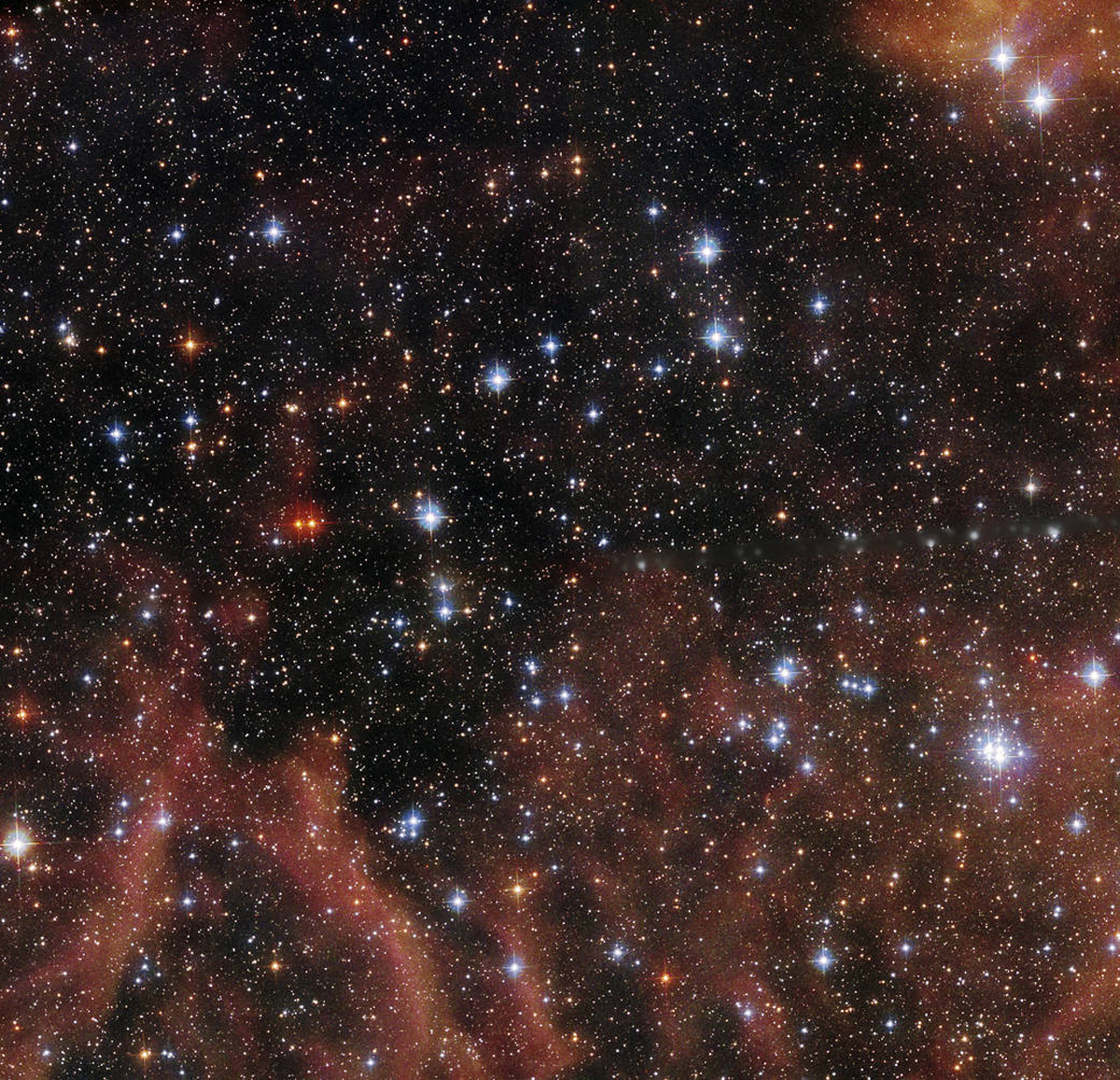Hubble Space Telescope delivers holiday sparkle in new image
The red backdrop represents interstellar dust from a nearby dwarf galaxy.

Images from the Hubble Space Telescope can deliver New Year cheer with science.
One such case is a new image from the 32-year old observatory, published on Dec. 1. Here, the Hubble Space Telescope sees the quintessential colors of the holiday season, as bright blue-white stars shine against dusty swaths shaded red.
These stars are located outside the Milky Way, in a patch of sky located within a nearby galaxy called the Large Magellanic Cloud (LMC). As the name suggests, it looks like a round smudge in the southern sky. But in fact, this celestial smear is an irregularly-shaped, small satellite galaxy of the Milky Way. It is located roughly 150,000 light years away from Earth. But despite this distance, Hubble is able to make out fantastic details.
Related: The best Hubble Space Telescope images of all time!

Take for instance, the glittering stars Hubble can see there. They belong to a particular region within LMC, called BSDL 2757. It is an open cluster, a group of stars loosely held together by their mutual gravity. Astronomers like to study star clusters because they hold information about how stars – the most basic units of the cosmos – come to exist. Open clusters are particularly interesting because the hundreds of stars within one cluster likely share the same origin. That is to say, they evolved from the same molecular cloud of star stuff.
The blue, green and orange colors seen here are optical light, according to Hubble Space Telescope officials in the image description published last week. Dozens of bright stars shine in these shades against what looks like a rust-colored canvas.
But the red regions are not optical light. Rather, they represent information that Hubble gathered in infrared wavelengths of light. These are just beyond what human eyes can see. Their value is that they showcase sources of heat. In this case, the red represents interstellar dust wafting around in the open cluster.
Get the Space.com Newsletter
Breaking space news, the latest updates on rocket launches, skywatching events and more!
Astronomers are studying open cluster BSDL 2757 to investigate stellar evolution.
"The researchers studied growing, early-stage stars that are still accumulating mass from the clouds that envelop them," NASA officials write in the Hubble image description.
"As gas and dust spirals toward a budding, young star, it releases ultraviolet light. By analyzing how this light interacts with dust, astronomers can better understand the dust’s properties in different environments."
Hubble's successor is the James Webb Space Telescope (JWST or Webb). The observatory launched Christmas Day last year, and its team released its first official science data this past summer. JWST is specially designed to study the universe's infrared wavelengths, and can offer scientists more data on the material that appears here as the red backdrop.
Follow Doris Elin Urrutia on Twitter @salazar_elin. Follow us on Twitter @Spacedotcom or on Facebook.
Join our Space Forums to keep talking space on the latest missions, night sky and more! And if you have a news tip, correction or comment, let us know at: community@space.com.

Doris is a science journalist and Space.com contributor. She received a B.A. in Sociology and Communications at Fordham University in New York City. Her first work was published in collaboration with London Mining Network, where her love of science writing was born. Her passion for astronomy started as a kid when she helped her sister build a model solar system in the Bronx. She got her first shot at astronomy writing as a Space.com editorial intern and continues to write about all things cosmic for the website. Doris has also written about microscopic plant life for Scientific American’s website and about whale calls for their print magazine. She has also written about ancient humans for Inverse, with stories ranging from how to recreate Pompeii’s cuisine to how to map the Polynesian expansion through genomics. She currently shares her home with two rabbits. Follow her on twitter at @salazar_elin.









